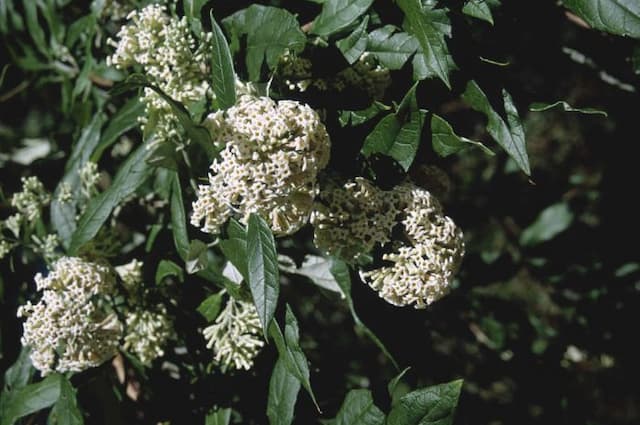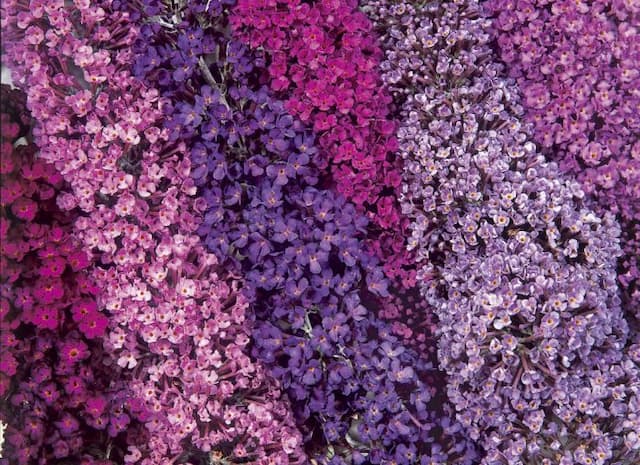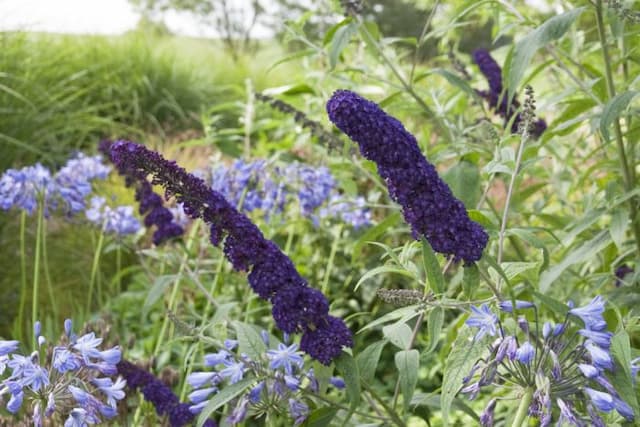Cape Jewels Nemesia Amelie = 'Fleurame' (PBR)
![aloha [Amelie]](/_next/image?url=https%3A%2F%2Fplants-admin.emdemapps.com%2Fimages%2Fplants%2F%2Fimages%2F604b64b57eff9.png&w=3840&q=75)
ABOUT
Nemesia Amelie 'Fleurame' is an ornamental plant recognized for its striking and vibrant blossoms which add a splash of color to gardens and outdoor spaces. This variety of Nemesia boasts a profusion of flowers with a captivating color palette that often combines warm shades, such as oranges, pinks, and yellows, with enticing patterns. The blossoms exhibit a delicate and endearing shape, reminiscent of small snapdragons, with a cheerful and welcoming appearance. Each flower is comprised of a face-like structure with a set of lower lips that invite pollinators such as bees and butterflies. The upper part of the blooms sometimes showcases a contrasting hue or intricate veins, contributing to the plant’s ornamental charm. The foliage of Nemesia Amelie 'Fleurame' is typically lush and green, forming a dense and bushy backdrop that makes the colorful flowers stand out even more. Its leaves are small, lance-shaped, and provide a textured and verdant canvas throughout the blooming season. Overall, the appearance of Nemesia Amelie 'Fleurame' is characterized by its delightful blooms and fresh greenery, making it a desirable option for gardeners looking to imbue their spaces with life and color.
About this plant
 Names
NamesSynonyms
Cape Jewels, Amelie Nemesia.
Common names
Nemesia Amelie = 'Fleurame' (PBR).
 Toxicity
ToxicityTo humans
Nemesia Amelie, commonly known as Nemesia, is not widely recognized for being toxic to humans. There is limited information on the toxicity of this specific cultivar 'Fleurame' (PBR). Typically, nemesias are not considered poisonous, and there’s no widespread evidence of them causing harm if ingested. However, as with any plant not typically consumed, there may be a risk of gastrointestinal discomfort or an allergic reaction in some individuals if they ingest parts of the plant. This could potentially include symptoms like nausea, vomiting, or diarrhea, but such cases are not commonly reported.
To pets
Nemesia Amelie, commonly known as Nemesia, does not have a well-documented history of being toxic to pets. The 'Fleurame' (PBR) cultivar of nemesia is not typically known for its toxicity. Generally, nemesias are not considered harmful to pets, and there is a lack of substantial evidence indicating that ingestion will result in poisoning. However, as with many plants, if a pet ingests a significant amount of the plant, there may be a risk of mild gastrointestinal upset, manifesting as symptoms such as vomiting or diarrhea. If you suspect your pet has consumed a large quantity of any plant, it is always best to contact your veterinarian.
 Characteristics
CharacteristicsLife cycle
Annuals
Foliage type
Deciduous
Color of leaves
Green
Flower color
Mixed
Height
1 foot (30 cm)
Spread
1 foot (30 cm)
Plant type
Herb
Hardiness zones
9
Native area
South Africa
Benefits
 General Benefits
General Benefits- Attractive Blooms - Nemesia Amelie produces vibrant and colorful flowers that enhance the visual appeal of gardens and landscapes.
- Long Flowering Period - It typically has a long blooming season, providing color and interest over an extended period.
- Compact Growth - Its compact habit makes it suitable for small gardens, borders, and containers.
- Easy to Grow - This plant is known for being easy to cultivate, requiring minimal maintenance and care.
- Drought Tolerant - Once established, it can withstand periods of dry weather, making it a good choice for water-wise gardens.
- Cold Hardy - It is relatively cold hardy, allowing it to thrive in cooler climates or withstand chilly periods in warmer zones.
- Attracts Pollinators - The flowers of Nemesia Amelie are attractive to bees and butterflies, promoting pollination in the garden.
- Versatile - It can be used in a variety of garden settings, from flower beds to containers, hanging baskets, and as edging plants.
 Medical Properties
Medical PropertiesThis plant is not used for medical purposes.
 Air-purifying Qualities
Air-purifying QualitiesThis plant is not specifically known for air purifying qualities.
 Other Uses
Other Uses- Nemesia Amelie can be used as a natural dye for fabrics, giving a light, pastel hue often appreciated in spring fashion collections.
- Pressed or dried Nemesia flowers can be included in personal stationery or greeting cards for a decorative, botanical touch.
- The petals of the Nemesia Amelie can be used as biodegradable confetti for weddings and other celebrations.
- Nemesias can be used in photography as a prop or a background to enhance the composition with their vibrant colors.
- Nemesia petals can be scattered in baths for their mild fragrance and to create a luxurious bathing experience.
- They can be incorporated into potpourri mixes for a subtle, naturally sweet aroma in the home.
- Nemesia Amelie's bright blooms can be used in edible flower garnishes to add a splash of color to salads and desserts (always ensure the plant is pesticide-free before consumption).
- The plant can be used in crafting, such as in floral wreaths or centerpieces, because of its delicate appearance and range of colors.
- Nemesia flowers can serve as inspiration for artists, being used as live models for botanical illustration and watercolor painting.
- These flowers can be used as teaching tools in schools for lessons on plant biology, pollination, and gardening.
Interesting Facts
 Feng Shui
Feng ShuiThe Nemesia is not used in Feng Shui practice.
 Zodiac Sign Compitability
Zodiac Sign CompitabilityThe Nemesia is not used in astrology practice.
 Plant Symbolism
Plant Symbolism- Charm and Beauty: The Nemesia's delicate features and vibrant colors symbolize enchantment, emphasizing the beauty in life and the allure of nature.
- Friendship: Given as a gift, Nemesia can represent a token of friendship, signaling appreciation for companionship and mutual respect.
- Success: The flourishing growth habit of Nemesia plants can symbolize success and the desire for achievements to blossom.
- Playfulness: The Nemesia's bright array of colors may signify playfulness and the joy of youthful exuberance.
 Water
WaterThe Nemesia, commonly referred to by its variety name Amelie, should be watered thoroughly when the top inch of soil feels dry to the touch. During the growing season, this may mean watering a couple of times per week, especially in warmer climates. It's important to avoid overwatering, as this can lead to root rot. Apply water directly to the soil rather than overhead to prevent fungal diseases. A good rule of thumb is to provide Amelie with about one gallon of water per week, adjusting based on rainfall and temperature conditions.
 Light
LightNemesia Amelie prefers a spot where it receives full sun to partial shade. The ideal location would offer morning sunlight and some afternoon shade, especially in hotter climates to prevent scorching. Ensure the plant gets at least six to eight hours of sunlight a day for optimal flowering and health.
 Temperature
TemperatureThe Nemesia Amelie thrives in moderate temperatures and can generally handle temperatures down to about 30 degrees Fahrenheit without being damaged. They perform best between 55 and 75 degrees Fahrenheit. Extreme cold or heat can be detrimental to the plant, so it's necessary to protect it from frost and intense midday heat during the peak of summer.
 Pruning
PruningPruning Nemesia Amelie encourages a bushier growth habit and more prolific blooming. Deadhead spent flowers regularly to promote continuous blooming throughout the season. Light pruning can be done as needed to shape the plant or remove any thin or leggy stems. The best time for pruning is late winter or early spring, just before new growth begins.
 Cleaning
CleaningAs needed
 Soil
SoilThe best soil mix for Nemesia (commonly known as Cape Jewels or Nemesia Amelie) should be well-draining, light, and enriched with organic matter. A suitable blend could be a mixture of peat, loam, and sand or perlite. The pH level of the soil should ideally be slightly acidic to neutral, in the range of pH 5.5 to 7.0.
 Repotting
RepottingNemesia plants generally do not require frequent repotting as they are annuals or short-lived perennials. It's best to plant them in a suitable pot where they can live out their life cycle without repotting. If grown as perennials, repotting every 2 to 3 years is sufficient to refresh the soil.
 Humidity & Misting
Humidity & MistingNemesia favors moderate humidity conditions. They thrive best when the air isn't too dry; a humidity level around 50% is ideal. Avoid excessively humid conditions which can promote fungal diseases.
 Suitable locations
Suitable locationsIndoor
Place Nemesia in a bright spot with no direct sun.
Outdoor
Plant in partial shade, shelter from strong winds.
Hardiness zone
9-11 USDA
 Life cycle
Life cycleNemesia Amelie 'Fleurame' begins its life cycle as a seed, typically germinating in early spring when soil temperatures warm up. Once germinated, seedlings emerge and establish themselves, developing into young plants with a compact growth habit and dark green foliage. As the plants mature, they enter the flowering stage, producing a profusion of small, colorful, fragrant flowers that can range from red, pink, to purple; this blooming phase can occur from late spring through fall, depending on the climate. After pollination, the flowers will fade, and the plant can set seed, completing the sexual reproduction cycle. Throughout its life, Nemesia Amelie requires regular watering and feeding to maintain its vibrancy and may undergo pruning or deadheading to encourage more blooms. The plant is generally treated as an annual in cooler climates but can behave as a short-lived perennial in milder zones, potentially resuming growth from its root system for several seasons.
 Propogation
PropogationPropogation time
Spring
Propogation: The Nemesia Amelie, also known as 'Fleurame', is best propagated through the sowing of seeds. The ideal time to sow Nemesia seeds is in late winter to early spring when the danger of frost has passed, ensuring a warm soil temperature that will encourage germination. Sow the seeds in a tray filled with a well-draining seed starting mix, press the seeds lightly into the surface, and then lightly cover them with a fine layer of soil or vermiculite. Maintain consistent moisture by misting with water, and place the tray in a location with bright, indirect light and a temperature of about 65 to 70 degrees Fahrenheit (18 to 21 degrees Celsius). Germination typically occurs within 7 to 14 days. Once seedlings are large enough to handle and after the last frost date, they can be transplanted to their final positions in the garden or container.



![Butterfly bush [Adonis Blue]](/_next/image?url=https%3A%2F%2Fplants-admin.emdemapps.com%2Fimages%2Fplants%2F%2Fimages%2F604b56e58f983.png&w=640&q=75)


![Butterfly bush [Buzz Ivory]](/_next/image?url=https%3A%2F%2Fplants-admin.emdemapps.com%2Fimages%2Fplants%2F%2Fimages%2F604b57987dfa8.png&w=640&q=75)
![Butterfly bush [Camberwell Beauty]](/_next/image?url=https%3A%2F%2Fplants-admin.emdemapps.com%2Fimages%2Fplants%2F%2Fimages%2F604b5ead04c12.png&w=640&q=75)

